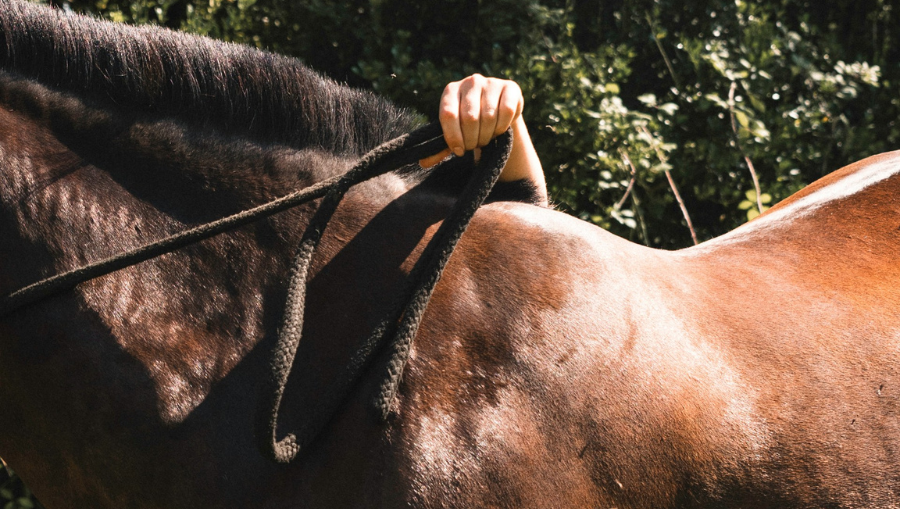Summer Feeding Guide: What to Feed Your Horse When Temperatures Soar

As temperatures rise during the summer months, horse owners must pay special attention to their feeding routines. Just like humans, horses can experience the negative effects of heat, especially when their diets do not support hydration, energy balance, and digestive health. This summer feeding guide will walk you through what to feed your horse when the temperatures soar, helping ensure their health, comfort, and performance all season long.
Understanding How Heat Affects Horses
Before changing a horse’s diet, it is important to understand how heat impacts their body. When horses are exposed to high temperatures and humidity, they lose significant amounts of water and electrolytes through sweat. Dehydration, electrolyte imbalances, and reduced appetite are common during hot weather. Additionally, heat can slow digestion, reduce energy levels, and increase the risk of colic if proper precautions are not taken.
The key to feeding horses in summer is to focus on hydration, avoid overheating from high-fiber or high-starch feeds, and ensure electrolyte and mineral balance.
1. Water is the Foundation of Summer Feeding
Ensuring your horse has constant access to clean, cool water is vital in the summer heat. An adult horse typically drinks between 5 to 15 gallons of water a day, but in hot weather, this amount can double. Clean and fresh water must be readily available to your horse at all times.
If your horse is reluctant to drink, try flavoring the water with a splash of apple juice or adding soaked hay or beet pulp to their diet to increase moisture intake. Also, placing water buckets in shaded areas can help keep the water cool and more appealing.
2. Electrolytes: Replace What’s Lost Through Sweat
Minerals such as sodium, potassium, chloride, calcium, and magnesium make up electrolytes. Horses lose these crucial minerals when they sweat, and without replenishment, they can suffer from fatigue, muscle issues, or heat stress.
If your horse is sweating heavily or working in the heat, adding a powdered or paste electrolyte supplement to their diet is a smart choice. Always provide free-choice salt as well. A plain white salt block or loose salt in a feeder can help encourage natural electrolyte replenishment.
3. Forage Comes First, But Choose Wisely

In every season, forage is key but during summer, it's important to choose types that suit the heat. Hay is naturally high in fiber, and while it is necessary, digesting fiber produces internal heat. To reduce the risk of overheating, avoid feeding large amounts of overly mature or coarse hay.
In summer, opt for high-quality grass hay or a mixed variety to support your horse’s needs. You can also consider soaking hay in water for 30 minutes before feeding to reduce dust and increase moisture content. Horses with a history of respiratory issues can benefit from this approach as well.
Pasture grazing is an excellent option in the summer if conditions allow. Fresh grass contains higher water content than hay, aiding in hydration. Just be cautious about turnout during the hottest part of the day and monitor the sugar levels in pasture grass if your horse is prone to laminitis.
4. Soaked Feeds: Cooling and Hydrating

Adding soaked feeds like beet pulp, bran mash, or hay pellets can increase your horse’s water intake while providing fiber and nutrients. These soaked feeds are especially useful for picky drinkers or horses that need extra hydration.
Beet pulp provides easily digestible fiber without adding much sugar to the diet. When soaked properly, it is a safe and hydrating addition to a horse’s summer feeding program. Always soak it well before feeding to reduce the risk of choke.
5. Protein and Energy Adjustments
In summer, horses in light work may not need as many calories as they do in winter. Overfeeding high-energy grain can cause unwanted weight gain or excessive internal heat production. It's better to feed according to your horse’s exercise and energy demands.
For performance horses or those in moderate to heavy work, consider feeding high-fat feeds like stabilized rice bran or vegetable oil. Fat is a cooler energy source compared to carbohydrates and produces less metabolic heat during digestion.
Always evaluate your horse’s body condition regularly. If they are maintaining weight and energy levels with forage and a balancer pellet, there may be no need for added grain.
6. Vitamins and Mineral Balancers
Sweating and increased water loss in summer can lead to nutrient imbalances. A good quality vitamin and mineral balancer can help cover any gaps in the diet, especially if the horse is on limited grain or pasture.
These balancers are designed to be fed in small amounts and can support hoof health, coat shine, and metabolic function during the warmer months.
7. Feeding Schedule and Timing
To help your horse stay cool, schedule feedings for early mornings or evenings when temperatures are lower. If your horse is turned out, ensure they have access to shade and avoid feeding large grain meals before strenuous work in the heat.
Smaller, more frequent meals are easier to digest and reduce the risk of heat-related digestive issues.
8. Watch for Signs of Heat Stress or Dehydration
Even with proper feeding, some horses may still struggle with high temperatures. Watch for signs such as:
-
Reduced appetite
-
Lethargy or dullness
-
Dry or tacky gums
-
Dark urine
-
Excessive sweating or lack of sweat
If you observe any of these signs, relocate your horse to a shaded spot, provide cool water, and contact a vet if the symptoms continue.
Final Thoughts

Feeding your horse during summer involves more than just providing food. It’s about creating a balanced plan that supports hydration, energy, and overall wellness during the most challenging time of the year. From adjusting forage choices and incorporating soaked feeds to monitoring electrolyte intake and body condition, every step you take can make a big difference. Proper nutrition planning goes a long way in keeping your horse healthy and resilient.





